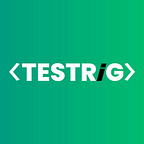The Crucial Role of Security Testing in Modern Product Development
Software development, ensuring the creation of high-quality products involves careful consideration of various elements. While performance testing stands out as a critical stage, it is equally imperative to acknowledge the indispensable role of security testing in the development process.
This article delves into the interplay between security and performance testing, emphasizing their joint significance for delivering successful and efficient products.
What is Security Testing?
Security testing is a systematic evaluation process that scrutinizes the security mechanisms of a system to uncover potential vulnerabilities, weaknesses, and loopholes exploitable by malicious entities. It encompasses a thorough examination of software, networks, applications, and systems to ensure effective resistance and mitigation against various security threats. Explore our blog on the Top Best Practices in Security Testing for valuable insights into robust security implementation in modern product development.
The importance of security testing lies in its proactive identification and resolution of vulnerabilities before exploitation. Through rigorous security testing, organizations can:
- Prevent Data Breaches: Identify and rectify vulnerabilities that may lead to unauthorized access and data breaches.
- Protect Customer Trust: Demonstrate commitment to user data security, building trust among customers and stakeholders.
- Compliance with Regulations: Adhere to industry and governmental regulations concerning data protection and privacy.
- Mitigate Financial Risks: Avert the financial consequences of security breaches, including legal liabilities, financial losses, and damage to reputation.
Types of Security Testing:
- Vulnerability Assessment: Identifying and prioritizing vulnerabilities within a system.
- Penetration Testing: Simulating real-world cyberattacks to discover weaknesses.
- Security Auditing: Evaluating security policies, practices, and controls to ensure compliance.
- Security Scanning: Automated scanning for known vulnerabilities in networks and applications
- Security Configuration Testing: Verifying security configurations of systems and applications.
- Social Engineering Testing: Assessing susceptibility to social engineering attacks.
Best Practices in Security Testing in Product Development
- Early Integration: Integrate security testing from the early stages of the development life cycle.
- Regular Updates: Keep security testing tools and methodologies current to address emerging threats.
- Comprehensive Coverage: Test all aspects, including applications, networks, databases, and user interfaces.
- Collaboration: Foster collaboration among development, operations, and security teams for a holistic approach.
- Realistic Simulation: Mimic real-world attack scenarios during testing to identify potential weaknesses.
Conclusion:
Security testing is not merely a reactive measure but a proactive strategy against the expanding cyber threats landscape. Understanding security testing, recognizing its significance, exploring its types, and adopting best practices empower organizations to fortify their digital defenses. Embracing security testing as a fundamental strategy safeguards digital assets and ensures a secure and resilient future.
Trust Testrig Technologies for the secret to a successful product development project. Your best option is to use our Security testing services. Count on our knowledgeable staff to optimize your software testing procedures, guaranteeing effective and faultless product development.
